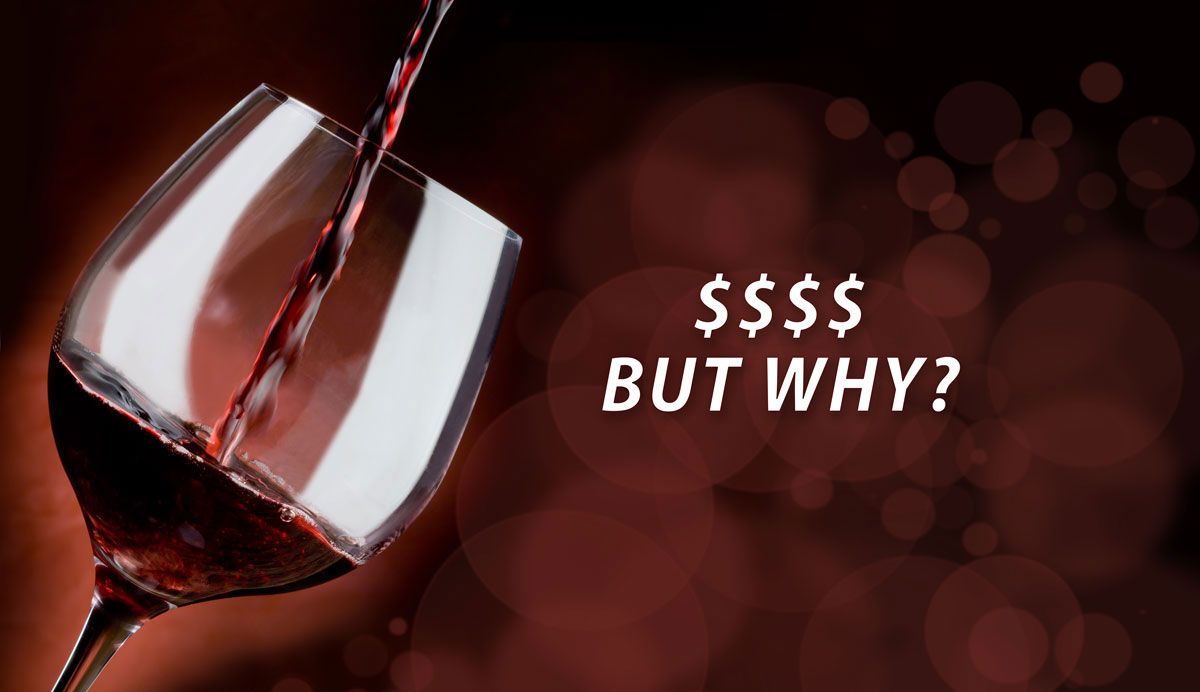
Summary: Karen MacNeil, one of the top wine experts in the US, shares insights from her experiences conducting exclusive, high-end wine tastings and balancing those memorable wine experiences with clients’ budgets. While some wines can cost hundreds, even thousands of dollars, MacNeil cautions that price doesn’t always equate to quality. In the essay, MacNeil outlines four main reasons why truly great wines command high prices. Understanding what makes wine special, she says, creates the most impactful, budget-conscious wine events.
I’ve conducted hundreds of exclusive wine tastings for companies and individuals. Although each wine experience is customized to the group and therefore different, there’s one commonality I must always consider: how much to spend on the wines.
It’s a complicated decision. Experiencing great wines is what makes a wine event so magical and memorable for everyone in the room. On the other hand, clients have budgets. How do I choose wines that will give the most impact for the least price?
A Thousand Dollars a Bottle?
Here’s a case in point. I recently conducted a wine tasting followed by a 4-course wine pairing dinner for a private equity firm and their top customers. The event was held at a 3-star restaurant whose wine list included scores of wines that cost nearly $1000 a bottle. It was a fairly large group, and I needed a total of 25 bottles of wine. But spending $25,000 on wine alone was out of the question.
Is a Wine’s Price Equal to Its Quality?
It’s important to point out that in wine, price and quality aren’t perfectly correlated. Some pricey wines aren’t worth their price tags (especially after restaurants mark those wines up—often 3 times their actual price). On the other hand, truly great wines generally don’t cost $30 either.
So why is great wine expensive? Is price arbitrary? Do some wineries just decide they’re going to charge a lot for their wines? Did, say, Screaming Eagle (the most expensive Napa Valley Cabernet Sauvignon) merely decide to price itself 150 times more than a good Cabernet from South America?
The Four Reasons Great Wine is Expensive
I think there are four main causative factors that legitimately make a wine expensive. And back to my private equity group, I created the wine experience that evening around these four factors.
Factor #1: Place. The earth, as it turns out, has her own erogenous zones. Places where grapes can be turned into thrilling wine. There are 13 million acres of vineyards in the world that produce wine grapes. In general, cheap wines are often giant blends of grapes grown over hundreds, sometimes thousands, of miles. The narrower the focus, the more the wine is from a specific tiny place, the more expensive it will be because you’re paying for the unique flavor of wines from just that tiny place.
Of course the wine from a tiny place will also mean that the production is limited. When you taste a wine for which there are only 100 cases in the entire world, it’s more exciting than tasting a wine that everybody can easily get.
Factor #2: Difficulty. How hard is the wine to make? When you drive by a vineyard it’s tempting to think that someone just picked the grapes, threw them in a press, fermented the wine, aged it in some barrels, put it in a bottle and it’s out the door. But many of the great wines of the world are made in far more painstaking ways.
One of the wines I included in my event with the private equity group was made by first laying out each cluster of grapes on mats where they were turned by hand every day so they could dry in the sun. Then the wine was aged for 9 years in a succession of different barrels before it was bottled and sold a decade later.
Factor #3: Vintage. There’s a saying in the wine industry that Nature bats last. Imagine an industry where every single year you never know if you’ll actually be able to make your product. Every year, after you’ve racked up hundreds of thousands, even millions of dollars in expenses, something could happen and you’ll have no sales—none–that year.
That is what happened in 2020, for example, when the Glass Fire—one of the most destructive in California history–burned for a whole month, scorching 67,000 acres across Napa and Sonoma. More than 1500 structures were burned including 31 wineries which burned to the ground.
So wineries must charge prices that allow them to sustain themselves in years of floods, drought, fires, and so on. The more a place is subjected to destructive forces like these, the more expensive the wines will be.
Factor #4: Personality. Wines that have a unique personality, that taste like nothing else can develop an almost cult following and that uniqueness can translate into a high price. Wines that have no substitute are always intriguing to experience.
Take the top wines from France’s northern Rhone region. The wines are like primal scream–they howl with tar, bacon, and black pepper flavors. And they’re fascinating to taste as a result.
About Karen MacNeil: Wine Expert, Speaker, and Author
Karen MacNeil is the CEO and President of Karen MacNeil & Company LLC. She gives keynote addresses and exclusive wine tastings for companies and individuals around the country. You can find out more and contact her at www.karenmacneil.com